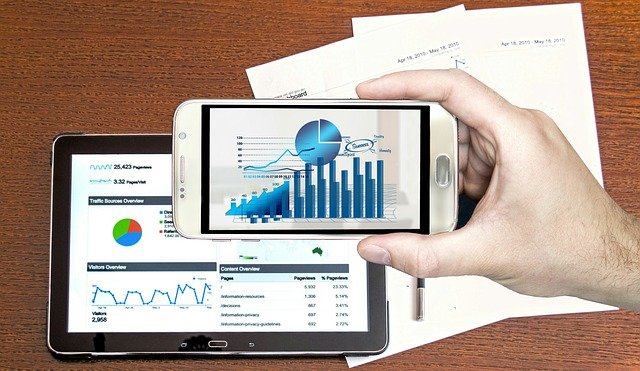The History of ERP Systems dates back from 1960 with advancement in Industrial revolution and Computer Technologies. Large scale production units started facing problems in managing, monitoring, and controlling their inventory. Accordingly development in this matter started which led to the invention of ERP. The current advanced Enterprise Resource Planning System crossed varoius stages to reach the latest version through these years.
Different Stages in the History of ERP Systems:
The evolution of modern ERP has mainly passed through five stages as described below. During the start of 1960 the industrial sector started feeling the need of a system to handle this issue. At first this paved way to formulate an Inventory Management System which became the first step towards ERP.
1. Inventory Management System – First Stage in History of ERP Systems:
Inventory Management system controls the combined information’s as well as the business processes to maintain the appropriate stock level in a warehouse that includes,
- Identifying procurement requirements
- Setting targets for procurement
- Providing replenishment techniques and options
- Monitoring consumption of items
- Reconciling the inventory balances and
- Inventory status reporting
In other words Inventory Management system was a tool to manage, monitor, and control their inventory mainly of a production unit.
2. Material requirements planning (MRP) Second Stage in Evolution of ERP Systems:
In 1970’s Material Requirements Planning (MRP) evolved as the next stage of ERP history. In short MRP handled the material requirements planning part for scheduling production processes. This includes generation of operation schedules and raw material procurement. Scheduling is specifically based on,
- Production requirements
- Production system process
- Inventory levels updation and
- Batch quantity palnning procedure for each operation.
In short MRP can be defined as an organized system for production planning and scheduling in industry. Thus MRP was mainly used to determine which material is required at what time and how much quantity are required. Hence the process involves monitoring of stocks and its demand, leading to automatic creation of procurement proposals for purchasing or production.
3. Manufacturing Resource Planning (MRP II) – Third Stage:
The third stage of the history of ERP is manufacturing resource planning that occurred in 1980’s. More manufacturing processes were added to MRP for simplified and accurate operation which formed the base of Manufacturing Resource Planning- II (MRP II). Further, MRP II utilizes software applications for coordinating manufacturing processes like
- Product planning,
- Raw Material Purchase
- Inventory control and
- Finished Goods distribution.
This provided the industry a more streamlined control in production by connecting all functional areas and encourages cross-functional interactions. Hence ERP is a broad-based resource co-ordination system
4. Enterprise Resource Planning (ERP) the Fourth Stage:
The Gartner Group introduced the term ERP in 1990 ‘s for a system which could be used to control and monitor the whole business processes. ERP evolved as a multi-module application software system in order to integrate business activities across all functional departments in an organization like
- Product Finalization.
- Raw Material Procurement.
- Inventory control.
- Replenishment,
- Order tracking
- Finished Goods Despatching
- Invoicing etc
A Best ERP Software Systems consists of several modules for supporting the business flow especially like
- Sales & Marketing.
- Finance.
- Inventory
- Procurement
- Human resources.etc
Basically ERP is an effective way of centralizing information and workflow processes through data management by managing your workflow data in one place. During this stage only large business units used ERP to support their functionalities of their daily business operations.
5. Enterprise Resource Planning(ERP II) Latest Stage in History of ERP Systems
ERP II is the successor evolved from ERP since year 2000. It can be defined as the Advanced web based ERP solution demanded by the modern business needs. The Modern Business demands an increased business focus on internal integration of their functions and processes as compared to earlier periods. Data in this is internally and externally circulated and accessible depending on various needs of business especially in this Internet era. ERP II is in short a complete package including departmental modules, CRM, SCM and other stakeholder’s modules needed by business sectors.
Studies on ERP invention and evolution points towards the need of coordinating manufacturing processes but it evolved out to be an integral system connecting all processes of an organization effectively. In general irrespective of their business nature now it is important for all business sectors to get centralized, real-time data along with streamlined business processes.
To get Regular updates on various Business, ERP, Software etc please follow us on our Facebook page

